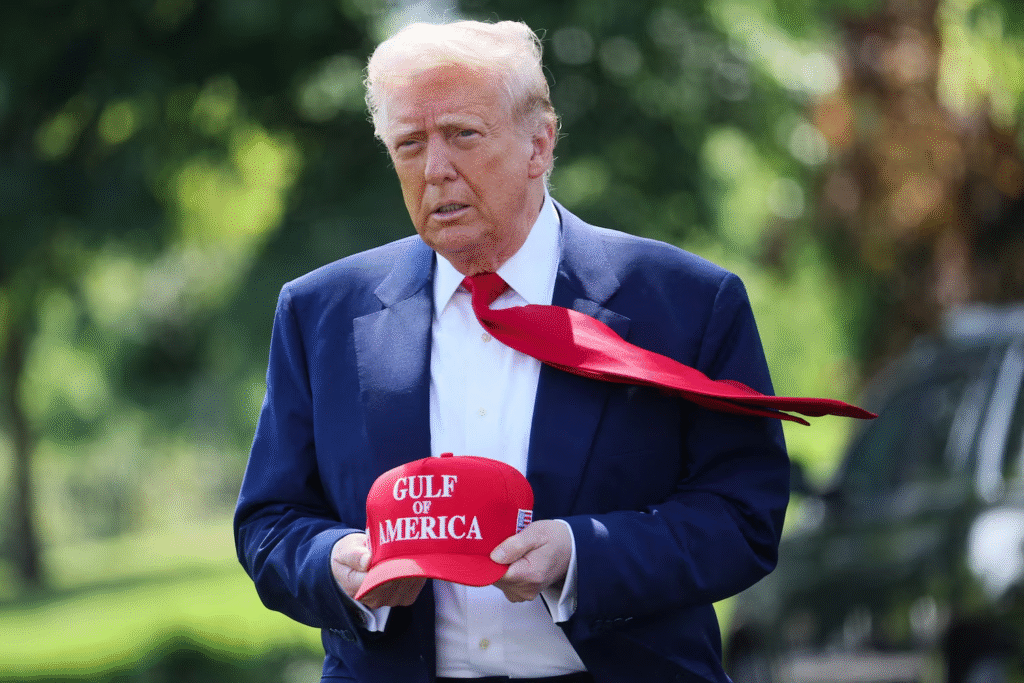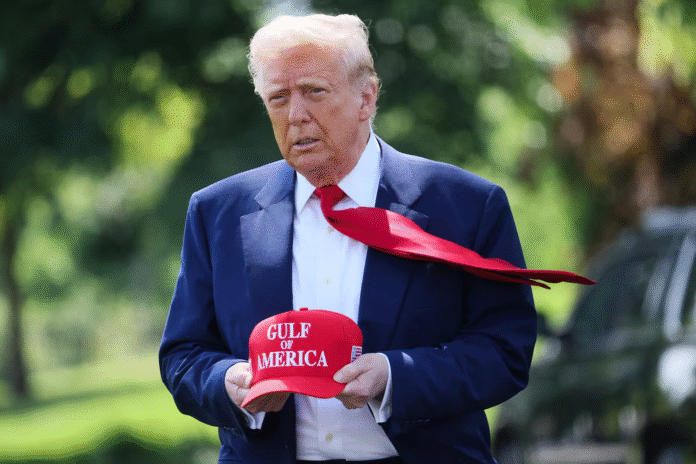
By [Author’s Name]
When Donald J. Trump returned to the White House in January 2025, he did so not with a message of healing or global cooperation, but with a defiant reaffirmation of the principles that propelled his first term: nationalism, confrontation, and above all, “America First.” But if his initial presidency reshaped the U.S.’s global image, his second term seems poised to fundamentally redefine America’s role in the world—often through aggressive, unorthodox, and deeply polarizing means.
From trade to territorial ambitions, diplomacy to defense, President Trump has plunged headfirst into a campaign to recalibrate global power dynamics. In doing so, he has unsettled allies, emboldened adversaries, and set the stage for a volatile new chapter in U.S. foreign policy.
A Presidency Fueled by Tariffs and Tensions
One of Trump’s most enduring tools—economic coercion—is back with a vengeance. His trade agenda, turbulent even during his first term, has returned in more aggressive form. Tariffs have become the default lever of influence, deployed as both a bargaining chip and a cudgel. Whether aimed at allies or adversaries, the message remains clear: play by Trump’s rules or face financial pain.
The most explosive front has been with China. Trump has raised tariffs on Chinese imports to as high as 145%, escalating a rivalry already fraught with tension. While both sides deny active negotiations, their quiet power struggle suggests a long and bruising contest ahead. Yet the administration claims that over 100 countries have shown renewed interest in trade discussions with the U.S.—an assertion that may test Washington’s bandwidth for complex global economic diplomacy.
This hardline approach hasn’t been without short-term victories. In one early example, Trump threatened a 25% tariff on Colombian imports unless the country accepted deported migrants from the U.S. After brief resistance, Colombia relented, highlighting the transactional nature of Trump’s international strategy.
But the volatility of these maneuvers—marked by abrupt shifts, delayed enforcement, and mixed messages—has rattled markets and left investors cautious. As critics like Edward Alden warn, without greater coherence, Trump’s trade policy risks weakening America’s economic leadership more than reinforcing it.
Expansionism and the Arctic Gambit
Beyond trade, Trump’s ambitions have taken a more territorial turn. From musings about “taking back” the Panama Canal to reviving interest in purchasing Greenland, his administration is increasingly focused on expanding America’s strategic footprint.
Vice President J.D. Vance’s visit to Greenland signaled more than curiosity—it was a clear indication of geopolitical intent. Rare earth minerals and Arctic shipping routes are becoming critical assets in the global power race, and Trump seems determined that the U.S. will not be left behind. “If America doesn’t lead,” Vance declared, “others will.”
This expansionist strategy also touches Africa. The administration’s involvement in brokering peace between the Democratic Republic of the Congo and Rwanda is driven less by humanitarian motives than by resource security. Similar motivations underpin a new economic deal with Ukraine, granting U.S. companies access to the country’s mineral wealth.
Ukraine, Russia, and the Fog of Peace
Trump’s bold claim that he could end the Russia-Ukraine war on “day one” of his second term has proven hollow. His dealings with Ukraine have fluctuated from confrontational to cordial. A fiery February Oval Office encounter with President Zelenskyy—who was told to leave after an argument—was followed by a more subdued, symbolic meeting at the Vatican.
Despite Trump’s insistence on neutrality, critics argue his administration has tilted subtly toward Moscow. Relations with Russia have notably warmed, with senior White House envoys meeting Vladimir Putin multiple times. While a new economic deal with Ukraine was signed—giving American firms access to vital minerals—it has done little to halt the bloodshed.
John Hardie of the Foundation for Defense of Democracies cautions that Trump’s approach risks further alienating Europe. “His desire for peace is laudable,” Hardie says, “but by refusing to hold Russia accountable, he undermines both Ukraine and America’s credibility.”
Gaza, Iran, and the Middle East Conundrum
In the Middle East, Trump’s policy appears simultaneously detached and interventionist. While an early ceasefire effort in Gaza fell apart, he has floated provocative ideas—like relocating Gazans and redeveloping the territory—that have drawn sharp condemnation. Critics say Trump has yet to craft a coherent roadmap for peace or reconstruction.
At the same time, he has revived nuclear talks with Iran while threatening military action if negotiations fail. This high-stakes brinkmanship reflects a familiar Trumpian pattern: start with threats, offer a deal, and demand credit regardless of the outcome.
Brian Katulis of the Middle East Institute warns that without a clear strategy, Trump’s broader ambitions in the region may be doomed. “The Israeli-Palestinian conflict remains the most intractable challenge. If Trump can’t address it, his Middle East agenda will remain stuck in neutral.”
Diplomatic Downsizing
Perhaps the most radical shift under Trump’s second term is his dismantling of America’s diplomatic machinery. Foreign aid has been frozen. USAID is being shuttered. Thousands of State Department jobs are on the chopping block. International institutions—from the WHO to the U.N. Human Rights Council—have seen the U.S. walk away.
In their place, Secretary of State Marco Rubio has redirected U.S. diplomacy toward advancing Trump’s immigration agenda and targeting criminal cartels. Traditional diplomacy has been de-emphasized in favor of transactional, border-focused security deals—such as with El Salvador and Colombia—to accept deportees.
The goal, according to Trump, is to stop the U.S. from being “ripped off” by a bloated international system. But critics say the rapid withdrawal from global institutions threatens America’s long-term influence. As Bronwen Maddox of Chatham House notes, “By unpicking alliances at breakneck speed, Trump risks ceding America’s advantages to rivals like Beijing.”
A New Global Order—or Global Disorder?
At the 100-day mark, President Trump’s second term has already reshaped much of the U.S. foreign policy landscape. His approach is bold, unpredictable, and fiercely unilateral. Whether viewed as a necessary correction or a reckless dismantling, one fact is undeniable: Trump is not merely seeking to defend America’s place in the world—he is intent on rewriting the rules that define it.
In doing so, the U.S. finds itself at odds with allies, embroiled in multiple economic conflicts, and steering toward an increasingly confrontational future. For better or worse, Trump’s vision is no longer just a campaign slogan. It is now the blueprint for a remade world.
Would you like a visual timeline or infographic to accompany this article?


